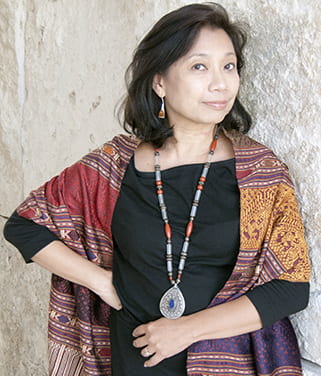Dr. Florina H. Capistrano-Baker
Tuesday, November 16, 2021
Livestream at 6:30 PM EST
RSVP: https://bit.ly/3pIL2ln
Please note this is a virtual program; advance registration is required.
This talk will attempt to illuminate the Philippines’ transcultural artistic heritage formed by centuries of maritime engagements with diverse cultures in Asia, the Americas, and Europe. The arrival of Spanish colonizers in the sixteenth century extended early trade networks in the Indian Ocean and South China Sea, stretching these ancient routes across the Pacific to Latin America, thence to Europe. With Manila as the fulcrum of this early global exchange popularly known as the Manila-Acapulco Galleon Trade (1565-1815), local societies exchanged raw materials, finished products, art works, concepts, and language in multi-directional circulations of culture that mutated in myriad ways.
Florina H. Capistrano-Baker will argue that defining Philippine art and identity is not simply a matter of peeling away cultural layers, for the essence of Filipino-ness is imbricated in the intertwined layers of external stimuli as Asian, European, and American empires successively and/or simultaneously attempted to draw the archipelago into their rival spheres, creating cultural entanglements that have become intrinsic to Philippine visual culture. Specifically, she will discuss recently available archaeological gold objects that demonstrate close links to Hindu-Buddhist South and Southeast Asian neighbors before Spanish colonization and conversion to Christianity; and examine how these pre-colonial traditions gave way to Hispano-Filipino iterations of intersecting Indigenous concepts and newly introduced European ideas.
 Florina H. Capistrano-Baker received her Ph.D. from the Department of Art History and Archaeology at Columbia University. She was formerly museum director of the Ayala Museum (Philippines) where she is currently consulting curator and special projects consultant. Since 2000, her research has focused on Philippine specificities within a metanarrative of global exchange between the 10th-13th and 16th-19th centuries. Her book Philippine Ancestral Gold (NUS Press and Ayala Foundation, 2011) documents previously unpublished material suggesting early trade with neighbors in the Indian Ocean and South China Sea. In 2015 she co-curated the exhibition “Philippine Gold: Treasures of Forgotten Kingdoms” at the Asia Society Museum and wrote the exhibition catalogue of the same title (Asia Society, 2015). She is co-editor with Meha Priyadarshini of the volume Transpacific Engagements: Trade, Translation, and Visual Culture of Entangled Empires, 1565-1898 recently published by Ayala Foundation, the Getty Research Institute, and the Kunsthistorisches Institut in Florenz (2020).
Florina H. Capistrano-Baker received her Ph.D. from the Department of Art History and Archaeology at Columbia University. She was formerly museum director of the Ayala Museum (Philippines) where she is currently consulting curator and special projects consultant. Since 2000, her research has focused on Philippine specificities within a metanarrative of global exchange between the 10th-13th and 16th-19th centuries. Her book Philippine Ancestral Gold (NUS Press and Ayala Foundation, 2011) documents previously unpublished material suggesting early trade with neighbors in the Indian Ocean and South China Sea. In 2015 she co-curated the exhibition “Philippine Gold: Treasures of Forgotten Kingdoms” at the Asia Society Museum and wrote the exhibition catalogue of the same title (Asia Society, 2015). She is co-editor with Meha Priyadarshini of the volume Transpacific Engagements: Trade, Translation, and Visual Culture of Entangled Empires, 1565-1898 recently published by Ayala Foundation, the Getty Research Institute, and the Kunsthistorisches Institut in Florenz (2020).
Sponsored by the Institute of Fine Arts and co-sponsored by Sulo: The Philippine Studies Initiative at New York University.
This talk is part of the Roberta and Richard Huber Colloquium on the Arts and Visual Culture of Spain and the Colonial Americas: the product of the generosity and continuing support of Roberta and Richard Huber.
For more information about the Roberta and Richard Huber Colloquium, please visit: https://www.ifa.nyu.edu/events/huber-colloquium.htm.